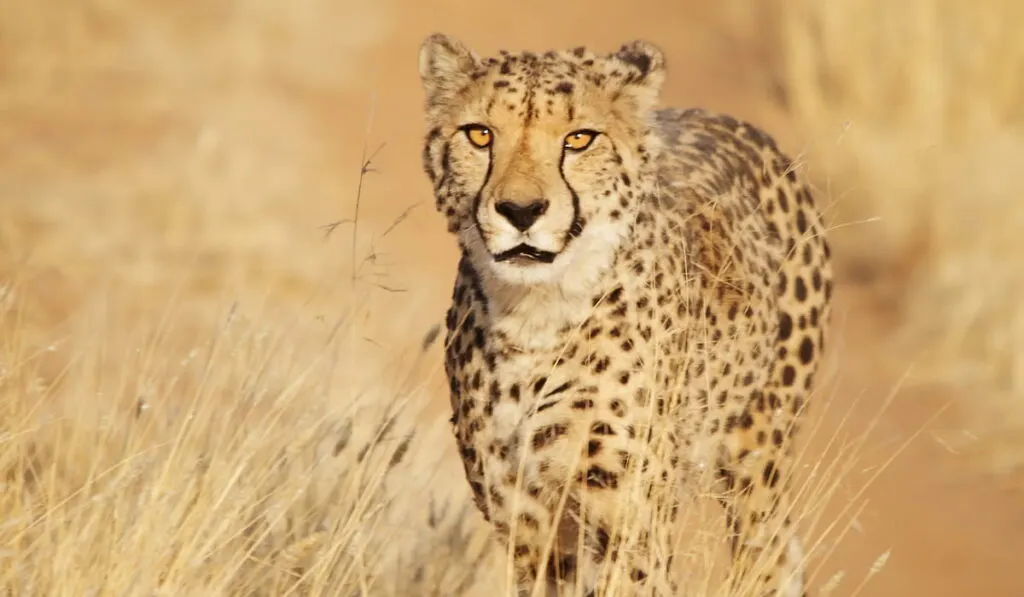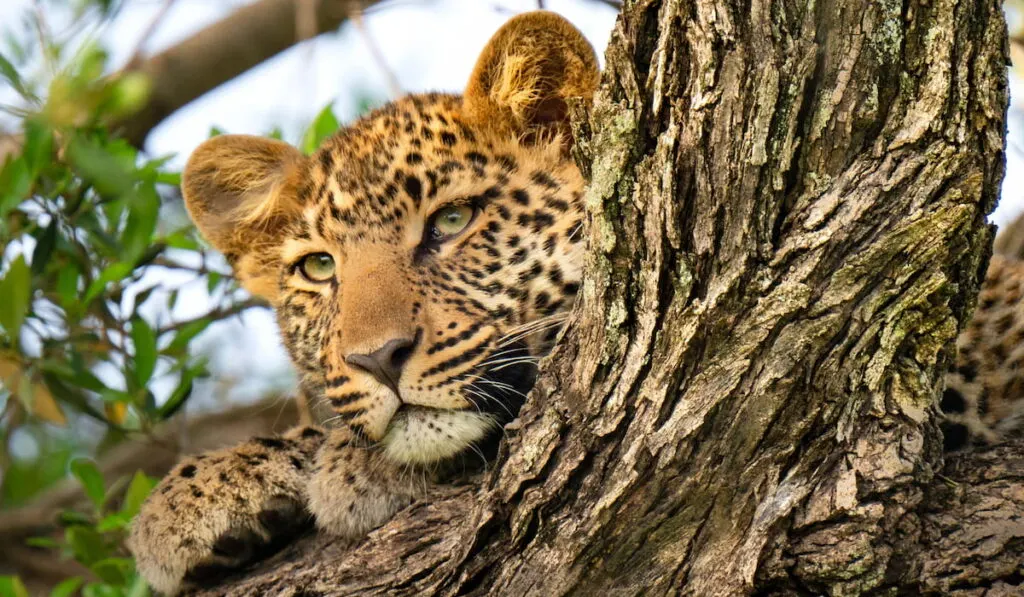Africa is home to some of the most amazing wildlife experiences in the world. Large game and wildlife populations are thriving in certain parts of the continent, and you can see incredible things camping there.
If you’re going on a wilderness hike in Africa, you should probably know what you’re getting into before hitting the ground. One common misconception about African wildlife relates to cheetahs and their climbing ability.
Specifically, do cheetahs climb trees?
While you can certainly find an occasional cheetah relaxing in the shade up on tree branches, they aren’t avid climbers like leopards. In fact, most people who see pictures of spotted cats in trees mistake leopards for cheetahs.
Cheetahs are decent climbers but typically can’t climb up vertical trees like leopards. Their claws are built differently than other climbers so that, while they can climb sloped trees or low-hanging limbs, they won’t usually be able to climb up tall trunks to chase prey or get away from other predators.

Read on to learn more about cheetahs and how well they can climb trees. Whether you’re traveling to see them in the wild or just love watching them at your local sanctuary, they’re amazing animals worth your time.
Table of Contents
Why Cheetahs Climb Trees
Cheetahs, in their natural habitat, are always battling the sun. In areas with sparse vegetation, trees are a prized location. The temperature in the shade is noticeably cooler than under direct sunlight.
Being out in the sun for hours a day burns a great deal more calories than resting in the shade. This is because the body has to work in overdrive to keep internal temperatures cooler.
Thus, cheetahs, and every other type of animal, are always on the hunt for some good shade.

The drive to find shade and get off the ground makes trees a center for predators and other animals that can defend certain locations.
For example, cheetahs are known to mark trees where they gather to ward off other would-be climbers.
From their perches, cheetahs can scan the area better for anything around them. They’re also able to use their sense of smell to ascertain the location of other animals in the neighborhood.
Cheetahs may also have to climb trees to chase after their prey
Other animals are almost always unlikely to beat a cheetah in a foot race, so sometimes they run up into trees to hide. If the prey is better at climbing than the cheetah, they may get away. Otherwise, it’s usually the end of the road.
Finally, cheetahs may drag prey into trees to keep them safe from lions, hyenas, and other animals looking to steal a kill.
Climbing: Cheetahs vs. Leopards
Cheetahs don’t have retractable claws, which makes climbing steep trunks and tree limbs challenging. Instead, their paws resemble that of a dog’s.
Cheetahs’ nonretractable claws make them faster than every other land animal, but they don’t help much when it comes to climbing.
Leopards, on the other hand, are excellent tree climbers.
An adult leopard can manage to carry a fresh kill that weighs hundreds of pounds high up into a tree without much difficulty. There, they’re better able to protect the food against other predators.

Leopards also have very powerful legs that are shorter than a cheetah’s legs. In addition, their hind legs are much heavier than an average cheetah, which propels them up vertical trees and high into tree limbs.
Cheetahs are built for speed. They can run incredibly fast and charge animals at high speeds. However, they typically lack the stamina required to manage their body weight when climbing a difficult tree.
No question, leopards are by far the better climbers. However, some people confuse leopards and cheetahs because of similarities in their appearance, which leads them to believe that cheetahs are also good climbers.
Appearance: Cheetahs vs. Leopards
Both animals have golden fur coats and dark spots. However, upon closer inspection, cheetahs and leopards are quite different.
As mentioned, leopards carry much more of their weight on their hind legs. Therefore, leopards are usually stockier and have larger multi-shaped spots than cheetahs.
Cheetahs are much lankier than leopards, and their coats have smaller spots on them.

Adult Cheetahs Teach Cubs How to Climb
Since climbing doesn’t come naturally to cheetahs, cubs learn to climb by watching their parents do it.
As a result, you can often see a family of cheetahs with the mother perched atop a higher limb and several of her cubs at lower points on the tree. Eventually, they’ll learn enough and will be able to scramble up to other parts of the tree.
In many cases, cheetahs don’t have to climb that much at all to get into trees. Instead, by zeroing in on shorter trees with sloped limbs and trunks, cheetahs can rely on their ability to pounce to jump up into the tree, where they can rest in the shade.
It’s rare to see cheetahs in tall trees that require long climbs.

Cheetahs Focus on Prey That Can’t Climb Well
Thankfully, cheetahs aren’t spending their time hunting prey that lives or hides high up in trees. Instead, they focus on food they can catch by relying on speed and camouflage.
Cheetahs primarily hunt antelope, warthogs, rabbits, and ground birds native to their habitat.
Even with their speed, successful kills aren’t a guarantee. Every big cat in Africa frequently deals with failed attempts to kill prey.
Cheetahs move and hunt in groups to increase their odds of a successful kill. Though not typically as large as a pride of lions, cheetahs live in families of four to six.
Final Thoughts
Learning more about cheetahs and other amazing predators is fun and educational. Now, you should be able to spot the difference between a leopard and a cheetah more quickly.
Odds are, if you see a spotted big cat high up in a tree, it’s a leopard. On the other hand, big cats sprinting across fields or lying in the shade on the ground are much more likely to be cheetahs.

